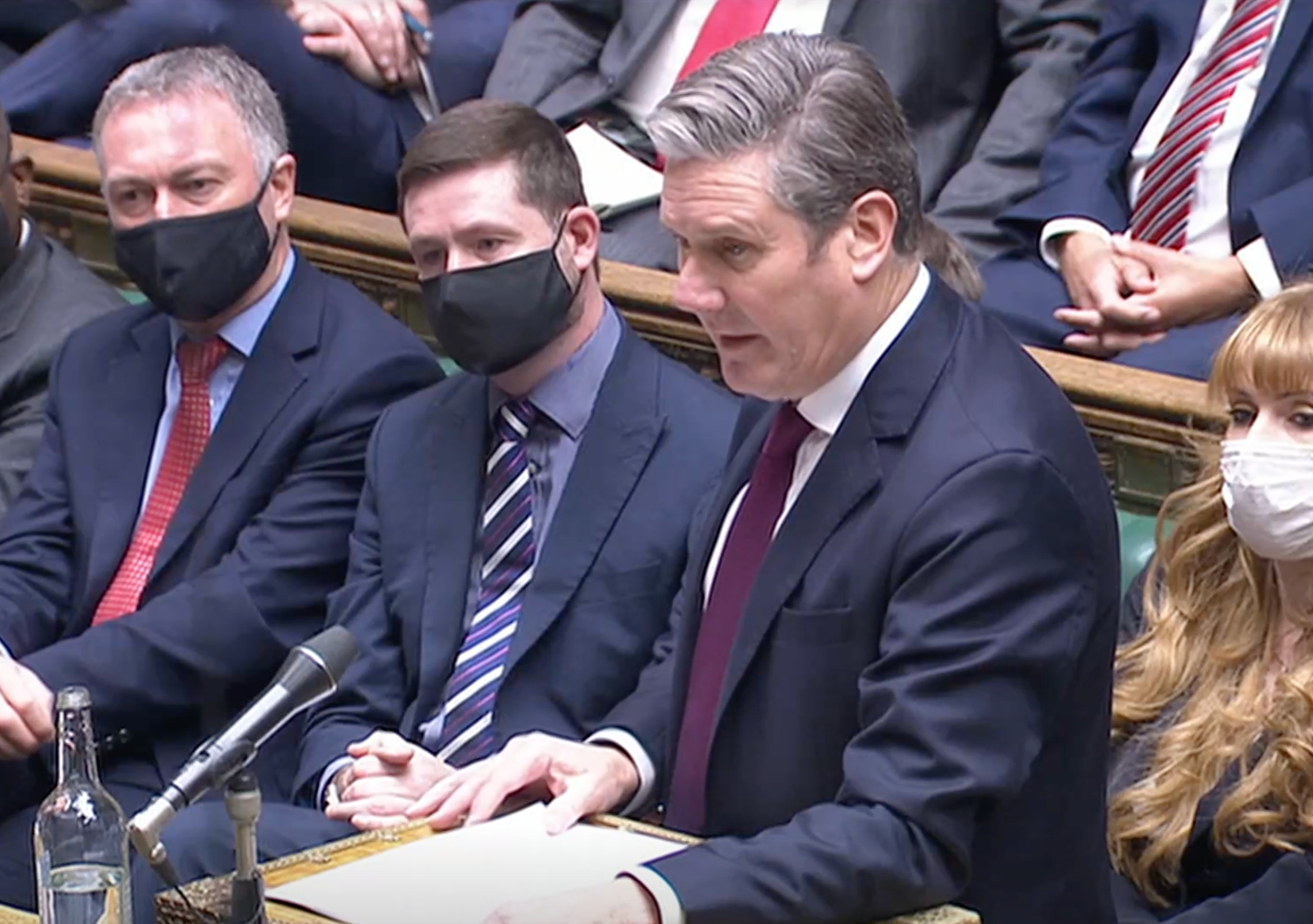The Independent's journalism is supported by our readers. When you purchase through links on our site, we may earn commission.
Keir Starmer needs to plan for a hung parliament
The next election is likely to be a choice between a Tory majority and a minority Labour government


Table A1.6 is one of the most important parts of The British General Election of 2019, the essential book that has just been published. It shows what a wide band of possible outcomes at a similar election – such as the next one – would result in a hung parliament.
Anyone unfamiliar with Table A1.6 might think that a parliament in which no party has a majority of seats is likely only when the two main parties are evenly matched in their share of the vote. Current opinion polls, giving Labour an average 37 per cent of the vote and the Conservatives 36 per cent, would indeed result in a hung parliament, with each party winning about 280 seats.
But what Table A1.6 shows is that anything between a Conservative lead of five points and a Labour lead of 12 points is likely to produce a hung parliament. Those figures might shift a little when the new constituency boundaries take effect in 2023, giving the Tories a dozen or so extra seats for the same number of votes. We can discuss the fairness or otherwise of these things later – suffice to say that it is more complicated than a conspiracy by life and the universe against the Labour Party.
What matters is that the width of the gap between a Tory majority and a Labour majority is the dominant psephological fact of the next election.
Maybe the Tories will do well. Boris Johnson might prove his resilience and bounce back, or the party might switch to Rishi Sunak and pull off the trick, yet again, of appearing to be a new government with fresh priorities. But it is possible, as one gloomy Tory MP put it this week, that “things can only get worse”. Also, it would be hard for Labour to present a less credible programme than it did at the last election.
Yet a Labour majority looks out of reach. Table A1.6 tells us that such an outcome would require Labour to win more than 45 per cent of the vote, and the Tories to win less than 33 per cent. That would be a bigger shift in votes between the two main parties (“swing”) than has happened at any election since the war – bigger even than the Tony Blair landslide of 1997.
As the 2024 election approaches (I don’t think there will be an election in 2023), the improbability of a Labour majority will become the second dominant psephological fact. So it is quite likely that the next election will be fought as a choice between a hung parliament, in which Keir Starmer would try to lead a minority Labour government, and a majority Conservative government.
We know from the 2015 election how difficult that can be for Labour. Entertaining though it may be for Labour types to crow about how David Cameron’s warning of a “coalition of chaos” under Ed Miliband turned out, the unalterable fact is that it ushered in what may turn out to be at least nine years of Tory government.
As George Peretz argues in Prospect magazine, it is in Labour’s interest to make sure that it is better prepared for that kind of election than it was then. It needs to deal with the issue in the campaign – especially the charge that Starmer would be in Nicola Sturgeon’s pocket. And it needs to have a good understanding of how a hung parliament works.
These two things go together, because one rule of a hung parliament is that the Scottish National Party cannot enable a Tory government. Or, rather, it cannot be seen to do so. It got away with it by stealth in 2019, tempting Jo Swinson of the Liberal Democrats, and then Corbyn, to give Johnson the election and therefore the majority Tory government he wanted. The SNP did it so successfully that its MPs ended up abstaining in the vote to hold an early election in the end, but by then, Labour had already fallen for it.
As Peretz puts it: “Though having a Conservative UK government suits the SNP in many ways, the party cannot afford to look as if a Conservative government suits them or appear to have deliberately facilitated its return to power.” That means that the SNP would have to allow Starmer to become prime minister in a hung parliament – given that no other party, probably not even the DUP this time, would prop up a Tory government.
That would remain true for some time after the formation of a minority Labour government. The SNP would no doubt be disruptive, but it would not bring down a Labour government if a Tory government looked like the alternative. That means Labour could resist SNP demands for another independence referendum, and could govern with a relatively free hand. The Lib Dems do not want to relive their experience of enabling a Tory government either.
The most difficult part of managing a hung parliament might be, as in the Seventies – and depending on the arithmetic – the leverage exerted by Northern Irish MPs. The precise number of seats could produce different tactical situations. If the Tories had more seats than Labour, for example, it would mean that if the SNP and Lib Dems abstained, the government would lose votes unless it threatened an election.
Even if legislation were difficult, however, Peretz points out that recent Tory governments have jealously preserved the powers of the executive over parliament. A minority government could, for example, renegotiate “the terms of the Trade and Cooperation Agreement with the EU (a review of which is due in 2026): the new terms can then be presented to the other parties as a fait accompli, which they can either vote against or vote for, but cannot amend”.
We have had two hung parliaments recently, in 2010 and 2017, but on each occasion the Tories found a partner with whom to govern in a reasonably secure way. If there is another hung parliament, it is likely to be very different, and to produce the kind of politics we haven’t had since the Seventies. We had better relearn our recent history.

Join our commenting forum
Join thought-provoking conversations, follow other Independent readers and see their replies